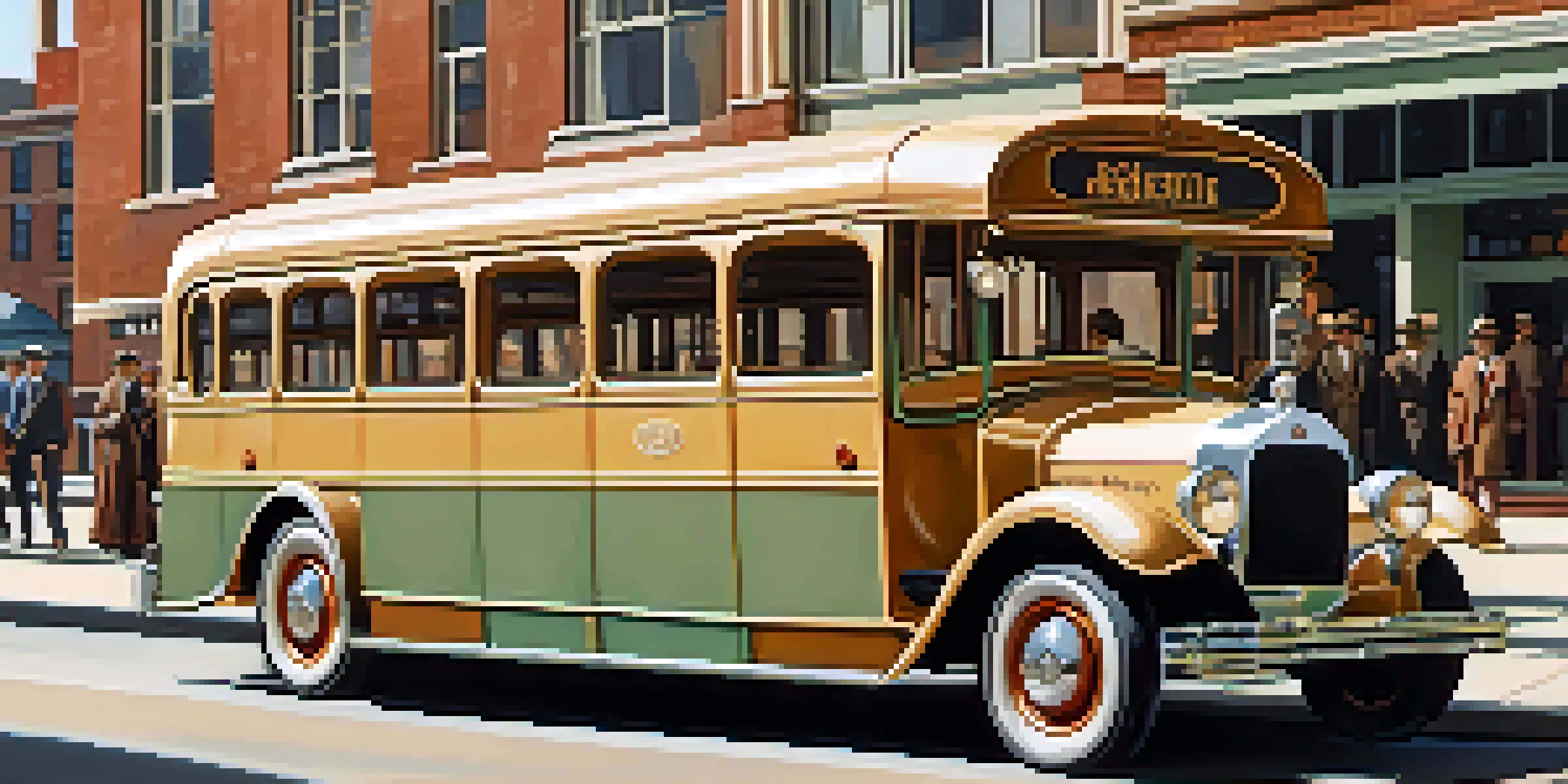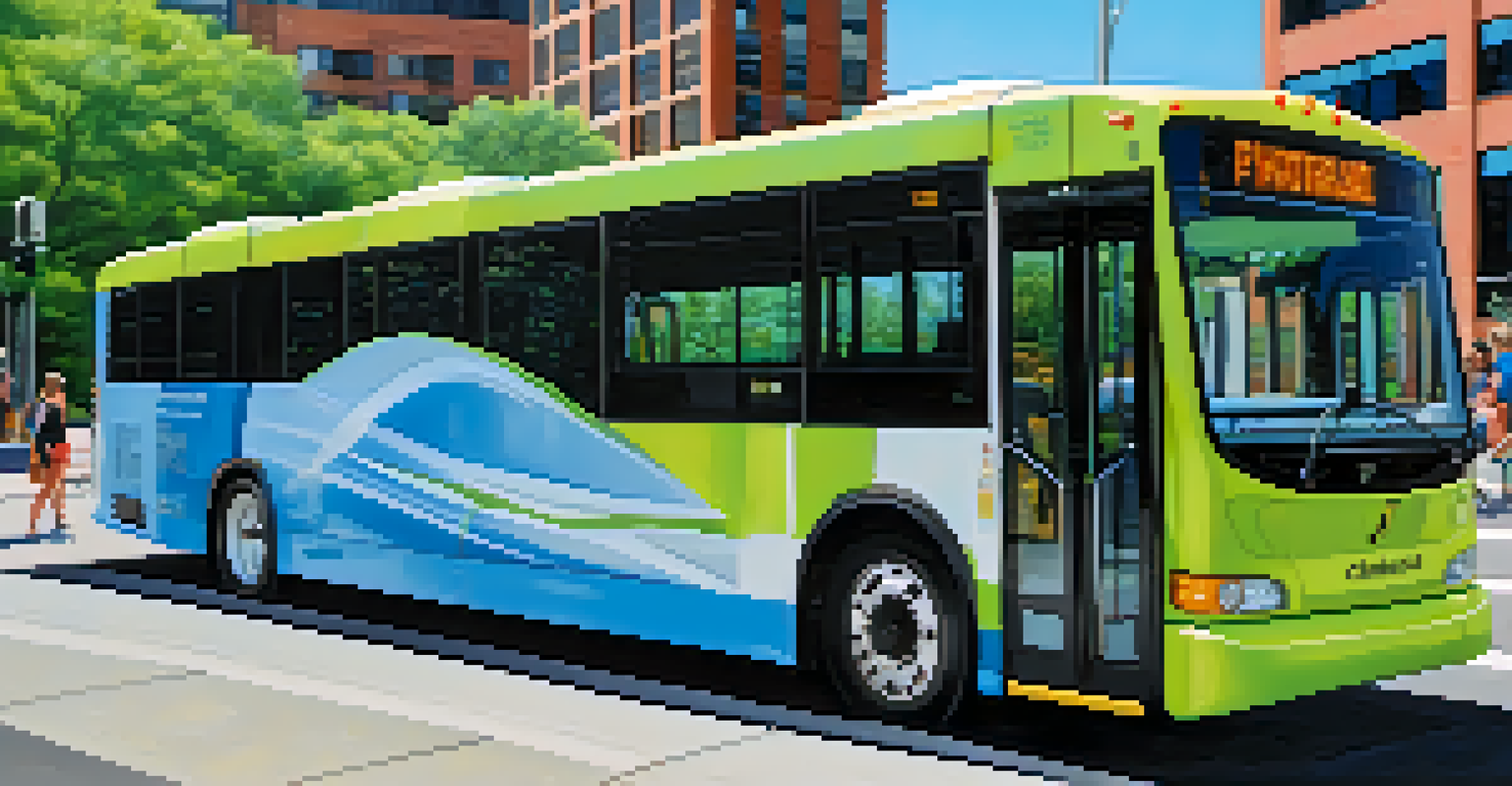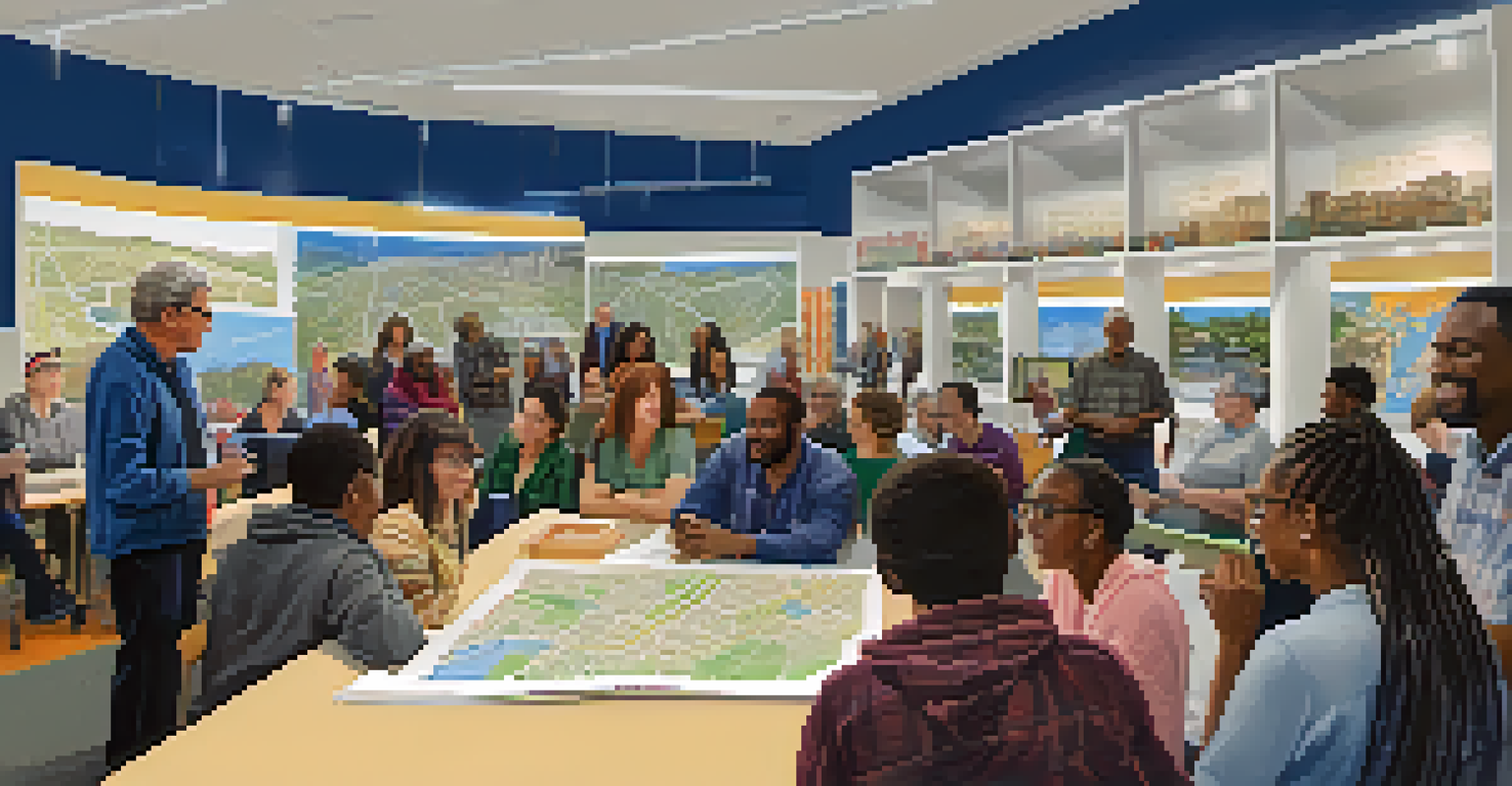The Evolution of Charlotte's Buses Over the Decades

The Early Days: Buses in the 1920s and 1930s
Charlotte's public transportation began taking shape in the 1920s when the city introduced its first motor buses. These early buses were a far cry from today's vehicles, often resembling oversized cars that served a limited number of routes. The goal was to connect neighborhoods with the growing downtown area, giving residents a new way to navigate the city.
Public transportation is a lifeline for community connectivity and economic vitality.
By the 1930s, the bus system started to gain traction, thanks to the expansion of the road network. More residents began to rely on public transit for their daily commutes, and the city recognized the need for a more organized system. This shift laid the groundwork for more structured routes and schedules, essential for accommodating the increasing ridership.
Despite their popularity, these buses faced challenges, including competition from streetcars and personal vehicles. However, the resilience of Charlotte's public transit planners ensured that buses remained a vital part of the city's transportation landscape.
The Post-War Boom: 1940s to 1960s Expansion
After World War II, Charlotte experienced significant growth, leading to a surge in bus ridership. Families moved to the suburbs, and the demand for reliable public transportation grew. The city responded by expanding bus routes and increasing the number of buses on the road, making it easier for residents to travel to work, school, and other essential destinations.

During this period, the design of buses also evolved, with larger, more comfortable vehicles being introduced. These improvements were crucial for accommodating the growing population and enhancing the overall commuting experience. The introduction of air conditioning in the 1960s was particularly well-received, transforming bus travel into a more pleasant experience during the hot summer months.
Charlotte's Transit Evolution
Over the decades, Charlotte's bus system has transformed significantly, adapting to the city's growing needs and embracing technological advancements.
However, this rapid growth also brought challenges, such as traffic congestion and the need for better infrastructure. Planners began to recognize that simply adding more buses wouldn't be enough to meet the city's needs; a comprehensive transportation strategy was necessary.
The 1970s: Environmental Awareness and Change
The 1970s marked a pivotal shift in public transportation, as environmental concerns began to take center stage. The energy crisis prompted cities like Charlotte to explore more sustainable transit options. This period saw the introduction of more fuel-efficient buses, which not only reduced costs but also aligned with the growing environmental consciousness of the time.
The bus is a symbol of community and mobility, connecting people to opportunities and each other.
Additionally, public transit began to be viewed as a solution to urban issues such as pollution and traffic congestion. Charlotte's city planners started promoting bus ridership as an alternative to personal vehicles, leading to community initiatives aimed at increasing awareness about the benefits of public transportation.
These changes laid the groundwork for the modern bus system we see today. The focus on sustainability and efficiency set a precedent for future developments in Charlotte's transit infrastructure.
The 1980s and 1990s: Modernization and Accessibility
As technology advanced, so did Charlotte's bus system in the 1980s and 1990s. The introduction of computerized scheduling and route planning made it easier for transit authorities to manage services efficiently. This modernization effort aimed to provide timely and reliable transportation for all riders, ensuring that buses ran on schedule and met the needs of the community.
Accessibility became a key focus during this era, with initiatives aimed at making public transportation more inclusive. Low-floor buses and improved signage were introduced to accommodate passengers with disabilities. These changes not only enhanced the travel experience for all riders but also ensured compliance with federal regulations regarding accessibility.
Community Engagement Matters
Recent years have seen an emphasis on community input, allowing residents to shape the bus system to better reflect their needs and preferences.
The impact of these improvements was evident as ridership continued to grow. The bus system became a vital component of Charlotte's public transit network, connecting various neighborhoods and fostering a sense of community among residents.
The 21st Century: Technological Innovations
Entering the 21st century, Charlotte's bus system embraced technological innovations to enhance the rider experience. Real-time tracking systems were implemented, allowing passengers to monitor bus locations and arrival times via mobile apps. This level of transparency made public transportation more user-friendly and encouraged more residents to choose buses over personal vehicles.
Additionally, the city began exploring eco-friendly options, such as hybrid and electric buses. These efforts were part of a broader initiative to reduce the carbon footprint of public transportation and improve air quality in urban areas. The commitment to sustainability resonated with the community and reflected a growing trend in cities nationwide.
These advancements not only improved the efficiency of the bus system but also helped to attract a younger demographic of riders. As Charlotte evolved into a vibrant, modern city, the bus system had to keep pace with the changing needs and preferences of its residents.
Community Engagement: The Role of Public Input
One of the most significant developments in recent years has been the emphasis on community engagement in shaping the bus system. Transit authorities have actively sought feedback from residents, holding public meetings and surveys to gather input on route changes and service improvements. This collaborative approach has fostered a sense of ownership and connection among riders.
By listening to the community, Charlotte's transit planners have been able to make informed decisions that align with the needs of residents. This has led to the introduction of new routes, increased service frequency, and better connectivity between various transit options. The focus on public input has transformed the bus system into a service that truly reflects the city's priorities.
Sustainability and Innovation
The city is committed to integrating eco-friendly options and smart technology, paving the way for a sustainable and efficient future in public transportation.
Moreover, this engagement has helped raise awareness about the importance of public transportation. Through community outreach initiatives, residents have become more informed about their options, resulting in increased ridership and a stronger public transit culture in Charlotte.
Looking Ahead: The Future of Charlotte's Bus System
As Charlotte continues to grow, the future of its bus system appears promising. With ongoing investments in infrastructure and technology, the city is poised to enhance its public transportation offerings further. Plans for expanded bus rapid transit (BRT) corridors aim to provide faster, more efficient services that can compete with personal vehicles.
Additionally, the integration of smart technology, such as contactless payment systems and enhanced rider information, is on the horizon. These advancements will streamline the commuting experience, making it easier for residents to navigate the bus system and encouraging more people to utilize public transportation.

Ultimately, the evolution of Charlotte's buses over the decades reflects the city's commitment to creating a sustainable, accessible, and efficient transit system. As the city looks ahead, it's clear that public transportation will continue to play a vital role in shaping Charlotte's future.